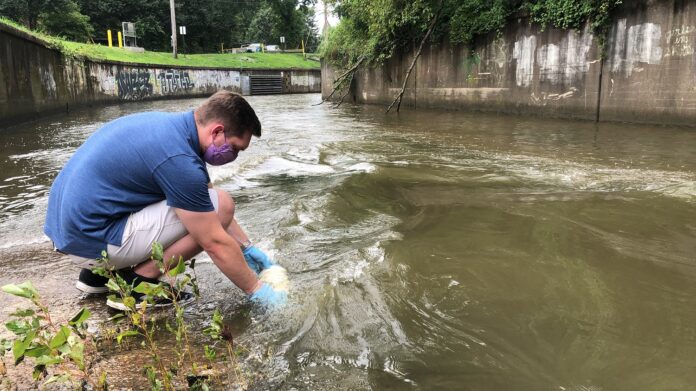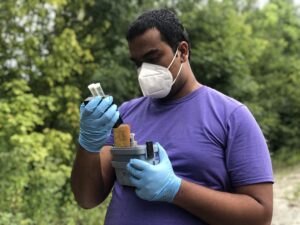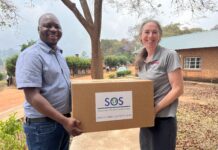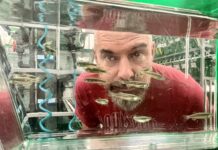
A team of University of Louisville undergraduate students has invented a new tool for monitoring E.coli bacteria in water sources that could be more efficient and cost effective.
The students, led by junior applied geography (environmental analysis track) major and Grawemeyer Scholar Sam Kessler, invented the tool during a service project with Metropolitan Sewer District, Bernheim Forest and The Nature Conservancy. They volunteered to help monitor, clean up and restore streams in Louisville, including testing them for E.coli bacteria, which is found in biological waste and can sometimes cause disease.
But, the team would have to consistently travel to each site — 10 sites across three different watersheds — at least five times per month to keep pace with the minimum testing required by the Environmental Protection Agency and Kentucky Department for Environmental Protection.
“With our class schedules, going to each of those sites multiple times per month wasn’t going to work for very long,” Kessler said. “We were traveling to some of these sites four times per week in between classes – Beargrass Creek, Bernheim Forest and all over. We needed something more efficient.”
To solve that problem, Kessler said, they invented a now patent-pending tool made from PVC pipe containing a special type of sediment material in mesh bags that can be left in the stream and read just once per month. Kessler believes their tool could dramatically improve the time and cost efficiency of testing.
“This is set-and-forget. You can leave it in the stream or river all month and test once instead of making at least five different trips,” he said. “And, because it’s in the stream all month instead of the isolated tests we currently do, you get more insightful results from a cumulative sample. This research could significantly improve the way we sample water for E.coli.”
Current testing only measures the levels of E.coli at the time of the test, not the days in between tests, Kessler said. For example, if a test on Monday shows no E.coli, the tester would have no way of knowing the stream was polluted the next day. Because the students’ tool can be left in the water all month, he said the result is a more comprehensive, cumulative sample.

“Understanding what makes safe, clean waterways is complex,” said Erin Wagoner, Environmental Partnerships Liaison for Louisville MSD. “From all the ways that land draining to a stream is used, to the chemical composition of the water in the stream, making these connections to improve the health of our waterways is a challenge. Creating a plan and developing a tool to make this process more efficient removes barriers to diagnosing the problems we are all trying to solve.”
While the tool has been tested only with E.coli so far, Kessler sees other potential applications. For example, he is interested in investigating whether it could be used to screen for SARS-CoV-2 by placing the device in wastewater.
“During COVID-19 specifically, limiting the amount of time human personnel are testing in the field is a smart thing to do,” Kessler said. “Maybe this could help.”

































